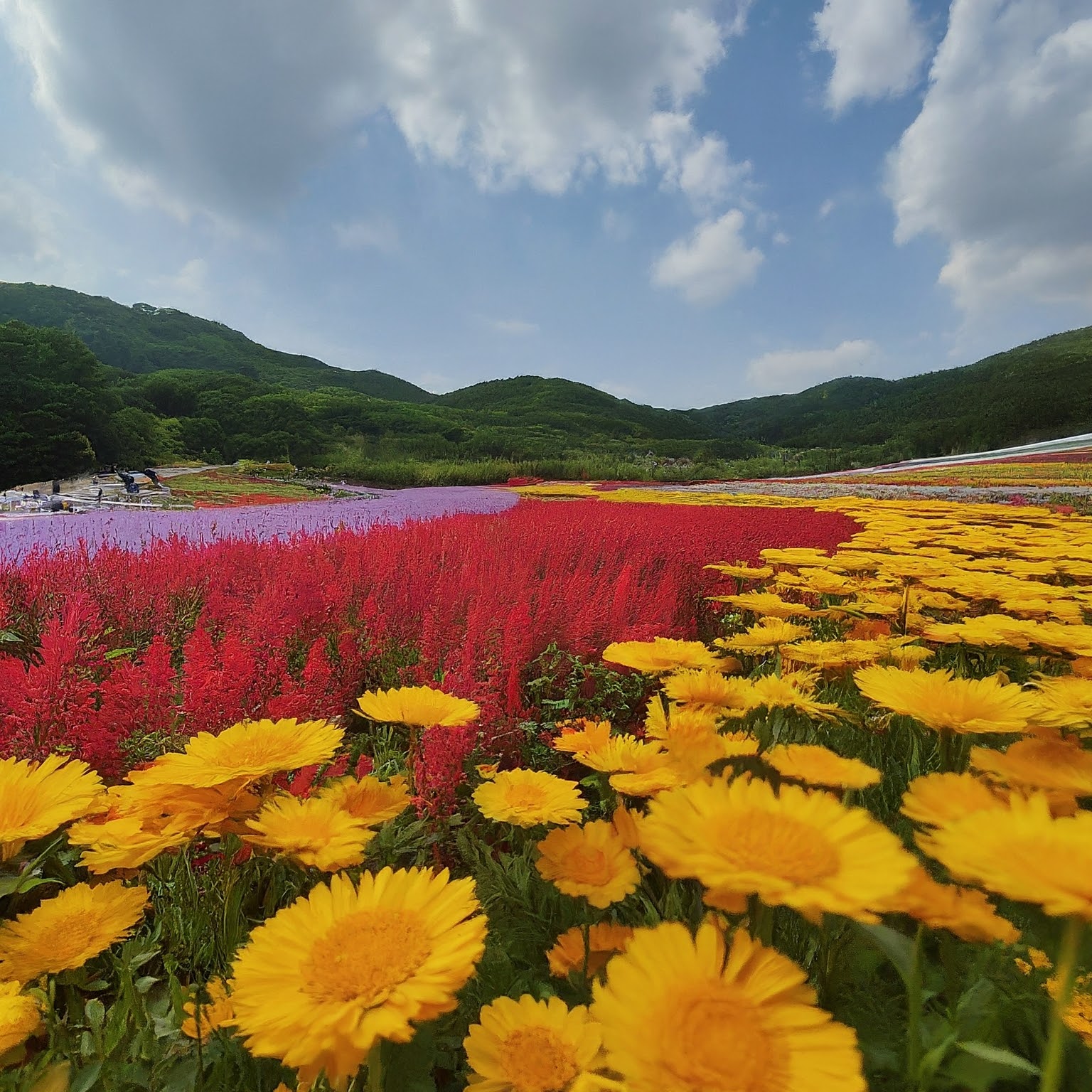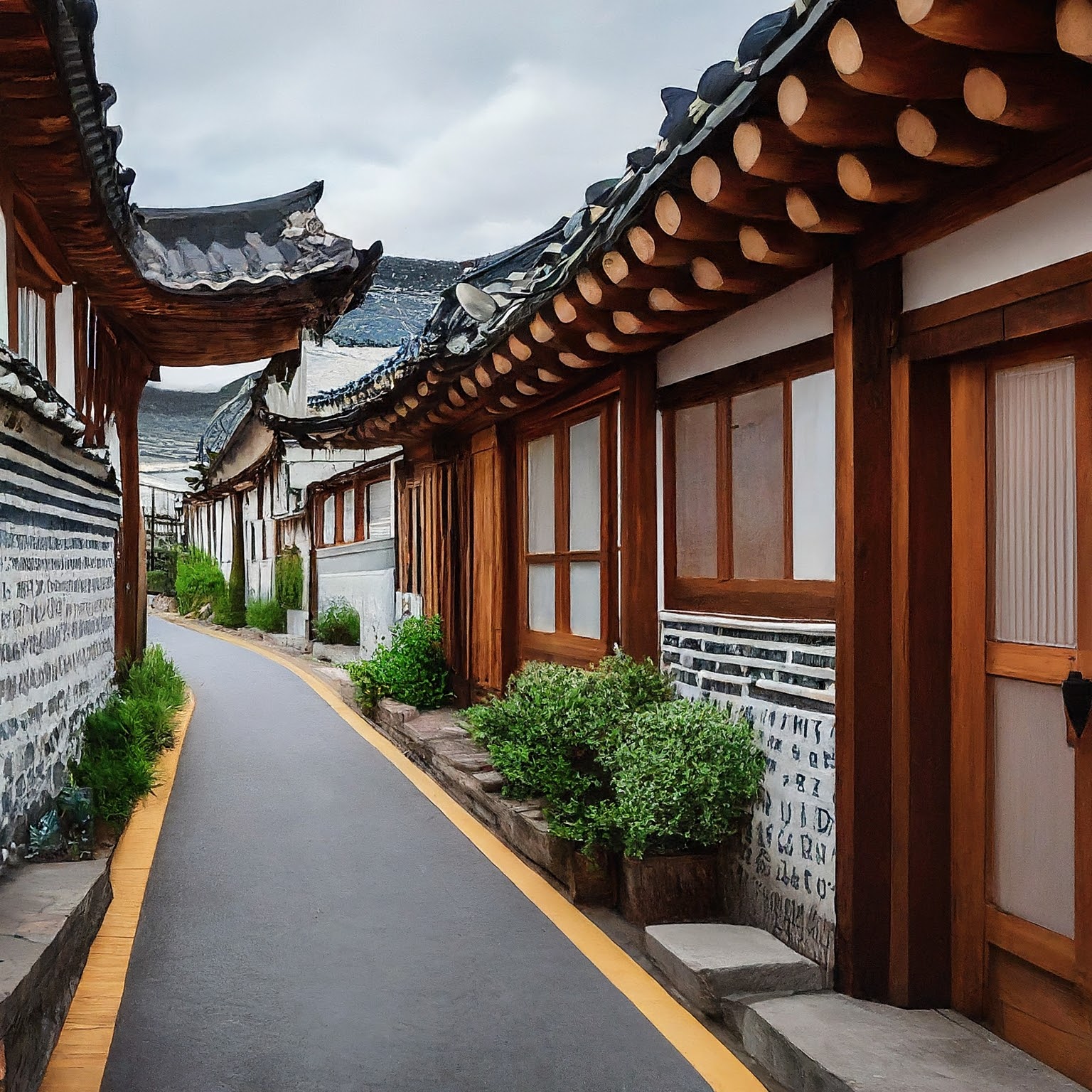1. N Seoul Tower, South Korea
If Taiwan has Taipei 101 and Malaysia has KL Tower, then South Korea has N Seoul Tower. A go-to tourist attraction, the tower’s been featured in K-dramas “My Love from the Star” and “Legend of the Blue Sea.” Sitting a top Namsan Mountain, the tower offers a breathtaking view of the cityscape at night. Guests can enjoy the view from the observation deck, or from either one of the restaurants or cafes. The tower’s pillar lights up at night and actually indicates the level of micro dust in the air: blue means clear air with little dust, green means a moderate amount of dust and the red lights indicates an extreme amount of micro dust in the air. At 105, Namsangongwon-gil, Yongsan-gu, Seoul.
2. Gyeongbokgung Palace
South Korea has many famous place for travelers. Gyeongbokgung Palace is as the residence of the royal family during the Joseon Dynasty, the palace was dubbed “a place where the new king can enjoy prosperity of great blessings”. Visitors can stroll through the palace grounds and explore a myriad of buildings that were restored and maintained, each with its own unique purpose. If you wear a Hanbok (traditional Korean dress), you may enter for free – making the palace an IG-worthy destination, as well.At 161, Sajik-ro, Jongno-gu, Seoul. Guests can enjoy the Royal Guard Changing Ceremony which happens at designated times between 9:30 AM to 2 PM.
3. Namiseom Island
Originally a hilltop, “Nami Island” was transformed to what it was during the construction of the Cheongpyeong Dam. It is one of the most famous island in south korea. The island is small enough for guests to tour around in half a day and is a must-see for fans of the popular K-drama, “Winter Sonata”. Namiseom Island is accessible via ferry from Namiseom Dock. The Metasequoia Lane and Ginkgo Tree Lane are frequently featured in Korean dramas and movies, making this a go-to background for fans.
4. Lotte World
Open all year round, Lotte World is located in downtown Seoul making it easily accessible via public transportation in south korea. The park boasts of both indoor and outdoor rides and attractions, with the Lotte World Tower Seoul Sky and Lotte World Shopping Mall close by. Lotte World has a one-day “Magic Pass” that allows guests to reserve rides and to cut down on wait-time for attractions. Sounds good right? You can only use it three times a day though, so choose your rides and attractions carefully.
5. Bukchon Hanok Village
Just a stone’s throw away from Gyeongbokgung Palace, Changdeokgung Palace and Jongmyo Shrine, Bukchon Hanok Village was home to the relatives of the royal family. The traditional houses, called hanok, now operate as cultural centers, guesthouses, restaurants and tea houses. Bukchon Hanok is a private neighborhood where people actually live. Therefore, keep your noise level to a minimum and be sure to dispose of all trash properly.
6. Myeong-Dong
Myeong-dong is a shopper’s paradise with shops ranging from international luxury brands like Louis Vuitton to local boutiques on pedestrian friendly streets, beauty enthusiasts will be in for a treat with dedicated shops so for Korean cosmetics – cloth masks – series, save BB creams and the latest skin care trends. Looking for souvenirs? Myeong-dong offers everything from traditional Korean crafts to quirky character merchandise.
Outside shopping, Myeong-Dong tempts your taste buds. Indulge in Korean street food like savory tteokbokki (spicy rice cakes) and fluffy hotteok (sweet pancakes with stuffing). For a sit down meal, look for restaurants that offer Korean BBQ, bibimbap (rice with vegetables and meat), delicious stewed seafood and don’t forget to grab a cup of aromatic boba tea, food a famous.
Myeong-Dong offers a glimpse into Korean culture. Visit the historic Myeongdong Cathedral, a beautiful Gothic building in the heart of the district. See a performance at Myeongdong Nanta Theater, a unique show that combines traditional Korean music with acrobatic and comedic elements. In the evenings, street artists showcase their talents and draw a crowd, creating a vibrant atmosphere.
7. Changdeokgung Palace
Designated a UNESCO World Heritage site in 1997, the palace was built during the Joseon dynasty and served as the royal residence for several kings. The buildings were designed and built to seamlessly blend in with the surrounding ponds, rock formations and greenery. The palace has a garden built at the back where royal members would often come out to rest. Currently, it boasts of several plants, a 300-year-old tree, a small pond, and a pavilion. The best time to visit this is during fall when the foliage changes color.
8. The Garden of Morning Calm
The Garden of Morning Calm is a botanical garden that showcases the best Korea’s nature has to offer. From themed gardens, a pine nut forest to flowerbeds and green pastures, the foliage is so breathtaking that this tourist spot has often served as the backdrop of several Korean dramas and movies. The Garden is gorgeous to stroll through the during the day, but is equally gorgeous at night. Every year end to springtime, a lighting festival takes place – so this may be a romantic spot to take your date to in the evening.
9. Yeonnam-dong
Yeonnam-dong is the latest go-to in Seoul as the once “normal” neighborhood has become a hub for students, artists and designers. Lined with unique shops, chic restaurants, cozy cafes and trendy boutiques – there is so much for visitors to discover, explore and to buy. There are also trendy alleyways with colorful murals that would be great for adding to your Instagram feed. If you’re a fan of “Descendants of the Sun”, then you’d be happy to know that Kang Mo Yeon’s home is in the neighborhood. Her personal space was shot at the showroom of the furniture shop, B Plus M.
10. Museum Kimchikan
This is a unique museum dedicated to teaching guests about the process of making Kimchi which was designated as UNESCO Intangible Cultural Heritage of Humanity. Here, guests can get there hands dirty, go through the pickling process and bring home what they made. There are tours and classes available in English, Japanese and Chinese for international guests. For a fee, guests can learn how to make whole cabbage kimchi and white kimchi – both of which are essential side dishes for Korean meals.










